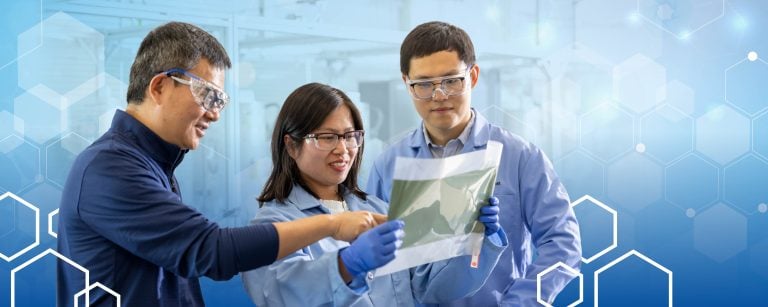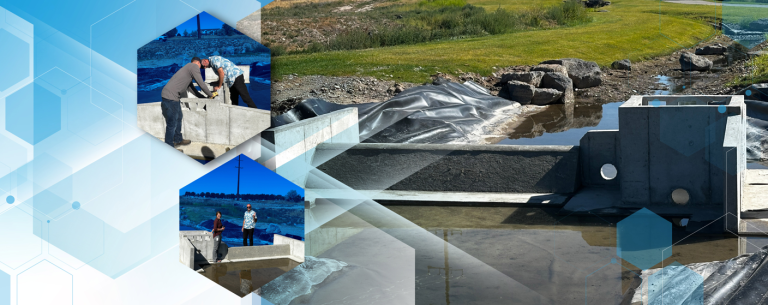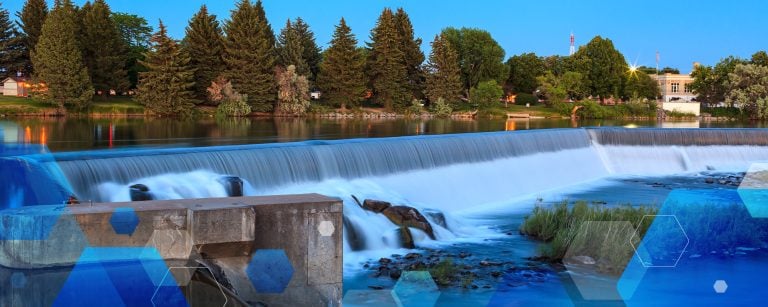Geoscience
Our advanced energy future begins at INL
What is Geothermal Energy?
Idaho National Laboratory’s Geothermal Program advances energy solutions using geothermal resources. Geothermal energy harnesses natural heat stored in the Earth’s crust to generate reliable and continuous power, contributing to a more resilient energy future. INL’s dedicated team of experts, state-of-the-art facilities and innovative research make the laboratory a leader in geothermal research, development and deployment.
At Idaho National Laboratory, we are proud to be at the forefront of geothermal research and testing. With our expertise and cutting-edge technology, INL is leading the way in the use of geothermal as a secure and efficient energy source.
Benefits of Geothermal Energy
- Reliable: Geothermal operates 24/7, providing a reliable and consistent power source.
- Stable energy costs: Geothermal power is insulated from fuel price fluctuations, offering long-term stability in energy costs.
- Local economic growth: Geothermal projects create jobs, stimulate local economies and enhance energy independence.
Key Capabilities
Led by some of the field’s most prominent researchers, INL is working to develop cutting-edge geothermal energy technologies to generate reliable and continuous power, and create a more resilient energy future.
Enhanced Geothermal Systems (EGS)
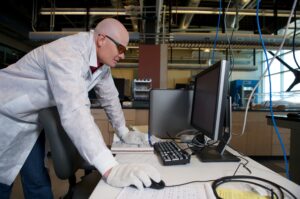
The Earth has produced heat since it was formed. The temperature at the core — 6,000 degrees Celsius — is roughly the same as the surface of the sun. This heat radiates outward through our planet’s mantle and crust. Earthquakes and volcanoes continually remind us of the energy beneath the Earth’s crust, but until now, human efforts to harness it have literally only scratched the surface. Conventional geothermal power plants have been built at sites where heat, water and permeable rock are available, but few places have been found that are large enough to generate significant amounts of energy.
With an enhanced geothermal system, a crew drills a well deep into hot subsurface rock then fractures it horizontally. This allows injected water to flow to a second well and return to the surface as steam, which drives turbines and generates electricity. Over the past 20 years, the oil and gas industry has learned much about fracturing subsurface rock horizontally to create deep wells. Experts estimate that EGS could provide electricity for more than 100 million American homes. With EGS, there is no need for preexisting subsurface water or permeable rock. Unlike intermittent renewable energy sources such as wind and solar, geothermal plants provide power that is available around the clock.
For more information about this work and potential partnership opportunities, please contact [email protected].
Geothermal Energy Storage (GeoTES)

Geological Thermal Energy Storage is a concept by which a geological formation can be used as a battery, storing energy in the form of heated liquid during times of excess energy generation and releasing it during times of peak energy demand. This approach can stabilize electrical grids to cope with intermittencies. By storing excess energy from intermittent sources such as solar and wind, GeoTES could play a significant role in assisting with peak demand ramping, easing stress on transmission and providing a variety of grid stabilization benefits.
Given the size, extent and distribution of deep saline aquifers in North America, the amount of energy that can be stored is enormous — enough to provide the grid balancing needed for increased renewable energy penetration. In addition to storing energy, using GeoTES to heat and cool buildings can result in energy savings between 30% and 80%. With these advantages, GeoTES is building international excitement for a possible energy storage method that is both economical and practical.
For more information about this work and potential partnership opportunities, please contact Trevor Atkinson at [email protected].
Hybrid Geothermal
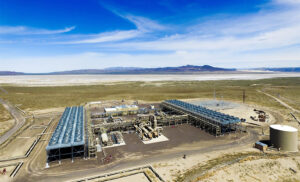
Although geothermal energy doesn’t experience the fluctuations in power output that renewable energy sources like wind and solar do, it sometimes faces a different challenge. Hot days make it harder to dissipate excess heat, which lowers output efficiency. Hybrid systems could address the challenge, especially with fine-tuning made possible by collaborating with commercial plants.
Enel Green Power North America’s Stillwater plant in the Nevada desert has been a site for hybrid geothermal research since 2015. That year, solar power was added to a system that used geothermal brine to heat a secondary system containing isobutane to spin turbines. Because the air-cooled geothermal system struggled to shed heat on hotter days, engineers used rows of parabolic solar mirrors to raise the temperature of the incoming geothermal brine, raising the level of energy available to boil the isobutane and resulting in more power to spin the turbines. The data collected at the Stillwater plant confirmed that the combination of a 2-megawatt solar thermal facility with a 33.1-MW geothermal plant increased overall output by 3.6% compared with production from geothermal only.
To help identify collaborative opportunities for optimizing this hybrid technology, Enel Green Power contacted engineers from INL and National Renewable Energy Laboratory. Their collaboration led to the first use of empirical data from a commercial hybrid plant to validate a theoretical hybrid model. INL and NREL continue to investigate different control strategies and power plant designs, exploring how minor adjustments can add up to significant improvements.
Hybrid geothermal energy plants are predicted to become standard in the future. Mineral recovery is an another especially attractive hybrid option, since some geothermal brines are rich in minerals and may contain lithium and rare earth elements, which have both economic and strategic value.
For more information about this work and potential partnership opportunities, please contact Trevor Atkinson at [email protected].
Critical Mineral Recovery
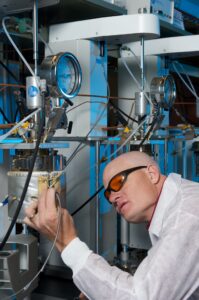
Rare earth elements and lithium are nontoxic metals considered critical materials due to their use in electronics, magnets, batteries, and a wide variety of industrial processes important to the economy and military preparedness. Demand is skyrocketing, and to limit reliance on imports it has become a national priority to identify and tap into domestic sources.
Geothermal power plants bring up a complex saline solution from far underground, where it is loaded with minerals that include lithium, manganese, zinc, potassium and boron. Geothermal brine is the concentrated liquid left over after heat and steam are extracted. In some cases, these brines can contain dissolved solids in concentrations of up to 30%. One study has suggested that if battery-grade lithium can be extracted from geothermal brine, 11 existing geothermal plants along Southern California’s Salton Sea alone could produce enough lithium metal annually to meet current U.S. demand and eliminate the need for imports.
DOE’s Geothermal Technology Office has also studied extraction of rare earth elements from geothermal brine. While studies have suggested lithium and manganese from geothermal fluids can be economically sustainable, similar studies have indicated recovering rare earth elements from geothermal brine will need to be more efficient to become profitable.
For more information about this work, please visit here or contact Travis McLing at [email protected].
Discovery and Exploration
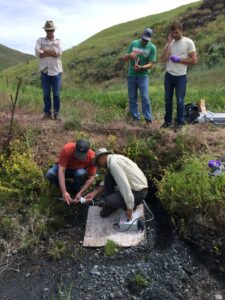
A 2023 report from the National Renewable Energy Laboratory projected U.S. geothermal capacity could grow tenfold by 2035, citing vast potential from both known and undiscovered resources. To accelerate progress, DOE invested in seven pilot projects exploring different geologic settings, development techniques, and well orientations, including sites with existing infrastructure, undeveloped “green field” locations, super-hot resources, and a well-characterized site in the eastern U.S.
For more information about this work and potential partnership opportunities, please contact Travis McLing at [email protected].
Integrated Energy News
At a nondescript laboratory in Idaho Falls, Idaho, Wei Tang, Wenjuan Bian and Dong Ding make highly sophisticated advanced energy...Read More
(IDAHO FALLS, Idaho) — Idaho Falls Power and the Idaho National Laboratory (INL), with support from the U.S. Department of...Read More
In many electricity markets, hydropower operators earn a significant portion of their revenue from the day-ahead market. In this market,...Read More

